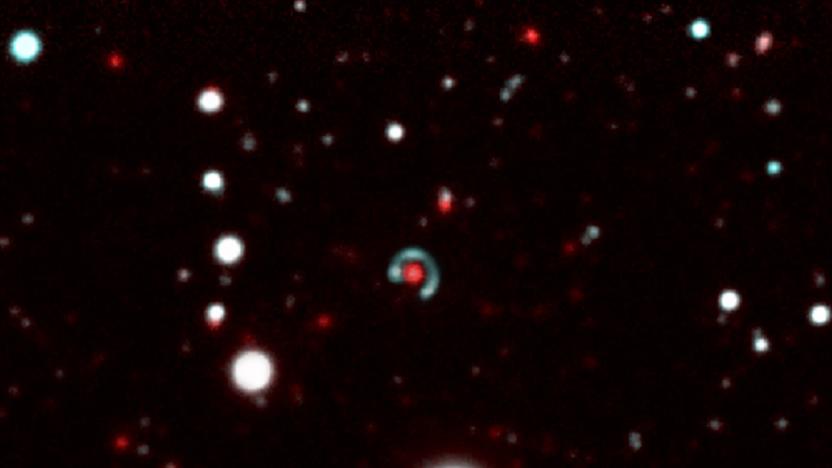darkenergycamera
Latest

Astronomers spot a tiny dwarf planet beyond Pluto
Pluto, Ceres, Eris, Makemake and Haumea have another possible candidate to consider for their dwarf planet squad. A team of researchers have discovered the new, tiny candidate deep within the Kuiper belt, 8.5 billion miles from the sun. It's officially called the 2014 UZ224, because they first spotted it in 2014 -- the reason we're only hearing about it now is because it took two years to confirm its existence.

Rare galactic alignment produces beautiful light 'ring'
First predicted by Einstein's theory of General Relativity, an "Einstein Ring" is a rarely observed, but incredibly interesting astronomical phenomenon that occurs when two distant galaxies are perfectly aligned, millions of light years apart. The light from the more distant "source" galaxy becomes bent and distorted as it passes through the gravitational field caused by the mass of the less-distant "lens" galaxy, resulting in a circle of light around the glow of the lens.

DECam: Gazing deep into the final frontier in search of dark energy
The National Optical Astronomy Observatory (NOAO) puts it into perspective right away: "Eight billion years ago, rays of light from distant galaxies began their long journey to Earth." It's important to hold that fact in mind, as we marvel at the first images from deep in the belly of our universe to arrive from the Chile-based Dark Energy Camera (DECam). As that name might suggest, peering at remote galaxies for purely visual gratification isn't the camera's primary purpose. The result of eight years of planning and hard work, involving engineers and scientists from three continents, the DECam is mounted on the Victor M. Blanco Telescope at the Cerro Tololo Inter-American Observatory in Chile. Sitting atop a 7,200-foot mountain, the camera is part of the Dark Energy Survey, which intends to gather information on over 300 million galaxies. The goal is to better understand dark energy -- a concept that represents our best explanation for why the universe's rate of expansion is speeding up, rather than slowing due to gravity. Gaze past the break for the background on the project.

